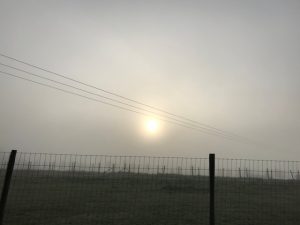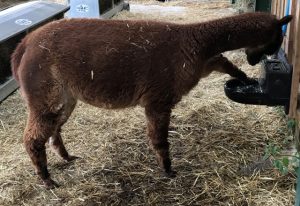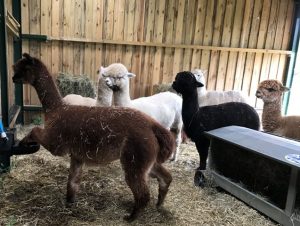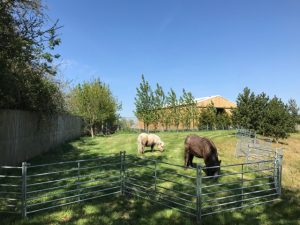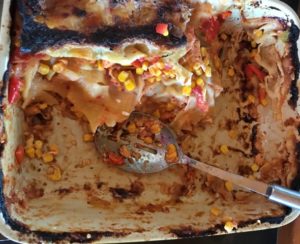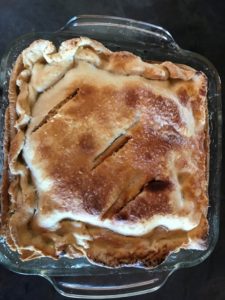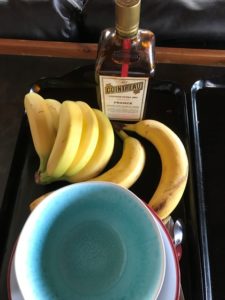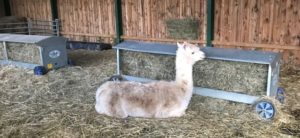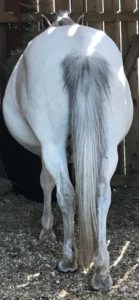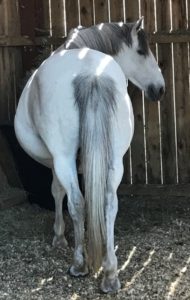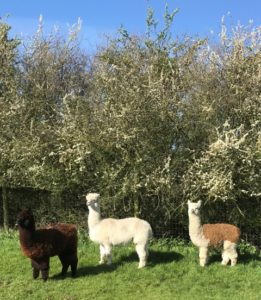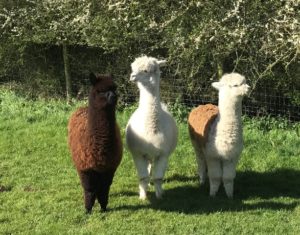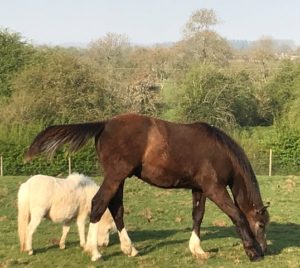Monthly Archives: April 2020
Alpaca Shearing preparations in Covid 19 conditions, be prepared
Shearing day approaches – a Herculean task made simple if you prepare ahead.
Don’t pester but confirm a couple of days before the time, place, date, postcode etc with your shearer. It may have been booked well in advance but technology along as humans often fail. Better to be sure.
Don’t be worried but have medical essentials handy: mobile phone, vet number, antibiotic/other spray, antiseptic/sudocrem, cotton pads for eyes/ ears/ cuts, scissors etc
If you have pregnant females being shorn, have a birthing kit at the ready too
Have a pad you can kneel on – ones used for gardening are good, you may be asked to hold an alpaca head at some point and the ground is quite hard.
Organise yourself ahead of the day with assistance and have back up if your back up should fail. Many hands make light work.
Order the bags for fleece samples, bags for fleeces in advance, giving time for Corona virus delays in deliveries.
Disinfect and clean barns to keep alpacas in to keep dry before shearing and keep warm/cool after.
Remember to stock up with canned drinks/packed sandwiches for your helpers and shearers
Remember to water and feed for Alpacas especially hay for those in barns waiting.
Caution – ensure females and females with cria are kept well away from males when barned for shearing, if possible use different barns.
Some breeders name bags with the Alpacas name, date and year, especially if low numbers and you intend keeping the fleece back a year before processing.
Remember your Alpaca must be clean and dry else the shearer may refuse to shear.
Caution – the alpaca should not have had any products put onto their backs/fleeces for at least 6 weeks prior to shearing.
Shears do not go through wet fleeces and wet fleeces rot when stored – so if the weather is dodgy (we live in the uk) then get them in the night before or nights prior.
Remember not to put too much straw down and don’t use shavings prior to shearing or your fleeces will look dreadful.
Your Shearer is likely to have other bookings afterwards so whilst most are friendly and helpful, they all need to get on with the job.
Know which barn you are holding the Alpaca in and which you are shearing in, don’t have your bags of fleeces too far from the shorn alpaca but not right in its face flapping either.
Have a rubbish dustbin handy – there WILL be some fleece you will throw away inevitably.
Make sure you know where your electric points are (for shears) and ensure you have an extension cable handy if you are likely to need one.
Most shearers require D rings to attach ropes to. Watch a Youtube video to familiarise yourself with this method.
Carefully consider where you are going to put your fleeces whilst shearing and storing. Sunlight heats it up inside causing droplets of water condensation into dry fleeces and you don’t want rain in them either. Wrapping blankets in tissue is not a great idea as it rots in time and encourages mice.
Moths in fleeces ruin them, use Moth killers wherever you store your fleeces but keep out of the way of small children at all times.
Shear one colour then go to the other colours – do not go one white, one black, one white, one brown or you will contaminate fleeces. Ensure you have a hoover/sweeper to clear the floor after every single shearing.
If it is very hot and the alpaca a little sweaty, dry fleeces out on tables in a barn where wind will not blow dust onto them or carry them away – before bagging up for storing.
Keep your fleeces (if you can) in different bags – firsts (blanket) seconds (neck etc) thirds (legs etc) – they all have uses. If you can skirt before bagging great but don’t keep the shearer waiting whilst you do this, have a table and extra help handy using social distancing of course.
Ensure you have a damp towel for the odd spit or wee that inevitably happens. You won’t want this on your next fleece when the next Alpaca is shorn after.
Always ask about fighting teeth in males. If the shearer does not do teeth, they will still know to show you if the males fighting teeth need doing or any other teeth issues.
Watch the shearer do toenails, it is very helpful but remember the alpaca is constrained so not quite so simple when stood up and held. Look and learn.
Shearing is a good time to see the underneath of the alpaca and look for issues of body scoring, possible mites, infections and general wellbeing overall.
Shearing needs to be done carefully in order not to stress pregnant females and often females due can give birth on the day of shearing – pen the mother and baby up together to bond, keeping a watchful eye and do the Mother last if you can and if it was a simple birthing.
There are numerous shearing videos on the internet – it is a good idea to watch a few so that you know what to expect. Some younger alpaca scream, that’s life, they get over it and it is not painful for them. What you have to remember is that if you DO NOT shear – you will have a welfare issue with overheating and all sorts of other health issues under a heavy fleece.
Ensure there is time for breaks or have bottled water/canned drinks handy but cover tops to avoid wasps getting in open can holes. Packeted food can be served at social distancing.
If you are weighing your fleeces, note the bag weights, age of alpaca, name, date, weight so you can see over the years the development of younger alpaca
Cria fleeces will take time to skirt. They are muck magnets, do not despair you will get there in the end. Some breeders cria tip shear their cria to avoid this the next year but caution as to age of cria and weather conditions if doing so.
Shearing happens but once a year – book your shearer for the best weather time that suits your location and facilities as well as the Alpaca and enjoy it.
Some folk use shearing as a time to catch up on innoculations. There are divided opinions on this but certainly you get to see all bits of your Alpaca.
Creams – if you see dry skin and want to treat DO NOT put anything oil based on which could burn your Alpaca in the sun.
FLEECE
If storing ensure skirted and cleaned before storing
If selling, skirting is better but do not overdo it
If sending away to be made into yarn, skirt well or more will be wasted at the mill
If sending away to be made into yarn – check out prices well beforehand and choose your mill, they will usually send you bags for your fleece. Remember what you put in is what you get out – if you leave guard hair and rubbish in that is what will come out – prickly itchy yarn nobody will want to wear. Skirting is key to getting the best out of the fleece for yarn BUT you need quality fleece to start off with.
Felting – some good fleece, some average fleece for felting balls etc.
Nesting – all poor quality fleece can be bagged to sell for nesting birds etc
Poor quality fleece – can also be sold to go as stuffing for pillows and duvets.
Rainy days and predicted weather changes at Kensmyth, Clay Meadow
The early hot weather never lasts, I recall going to Tenerife early in the year when the Foot and Mouth crisis was on and it was hotter at home than there.. so glad our Alpaca are never shorn early so not put at risk.. just the wet and wind to watch out for if cria born late at night or first dawn..
A very sad day at Kensmyth, Clay Meadow
Lock down hot mama Alpacas queuing for a pedicure, Kensmyth, Clay Meadow
well most Alpaca breeders know that when nearly in full fleece a sprinkler is always welcome but having one pregnant lady teach the others to queue in the barn for a little “watering of the feet” to cool down was hilarious!
I don’t think I could raise my leg that high when I only had 10 days to go before giving birth LOL
losing coats not minds at Kensmyth, Clay Meadow
Babies on your mind at Kensmyth, Clay Meadow
Cooking in the sunshine at Clay Meadow in April 2020
Birthing imminent at Kensmyth, Clay Meadow
Well with Alpaca we always know to look for signs of something different.. like an Alpaca taking itself off to be on its own..
or humming intermittently to its unborn cria inside. clever stuff – so that when in the herd the baby will know whose call is MUMs!
so fascinating when they all sit and do it..
but I guess its more obvious with the big ‘orse LOL
Never underestimate Nanny Alpaca McPhee at Kensmyth, Clay Meadow
the power of a Nanny in the Alpaca world is amazing – either old or barren (bless her Daisy is both) they control their troups at bedtime..
control them through the day..
and .. pose for the camera at all times !
bless you Daisy for looking after the cria so well.. birthing time is nearly upon us so watch out your hours will extend rather rapidly soon LOL

